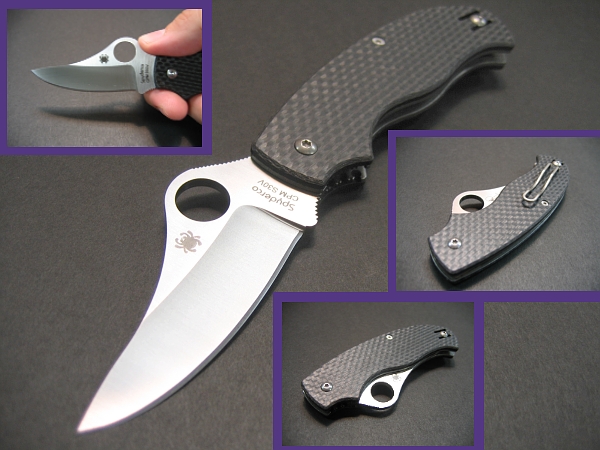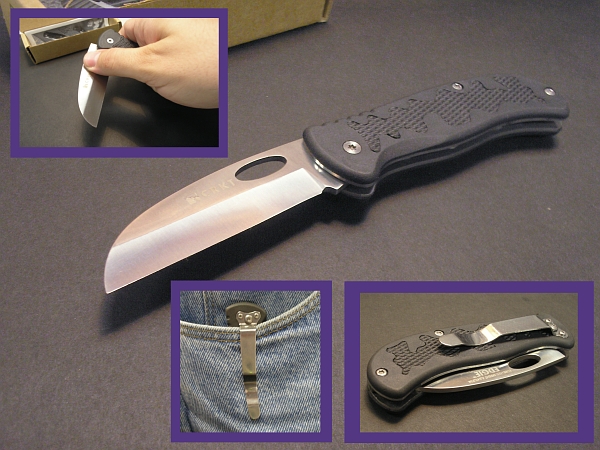Spyderco T-Mag vs. CRKT Edgie
Review by Phil Elmore
A slipjoint folder is, as most readers already know, a
folding knife that does not lock open. Slipjoints have been among the most
common of utility blades since the first Roman friction folders. While
technology has long since moved on, the need for a good slipjoint utility blade
has not changed in the intervening years. As luck would have it, I recently
found myself in possession of two examples of contemporary "slippies" by two of
the knife industry's larger manufacturers. Both the Spyderco T-Mag (now discontinued) and the CRKT Edgie are clip-equipped
non-locking folding knives intended for daily utility tasks. Both do what they
do well, though there are obvious differences between these two knives. The
Spyderco targets the high-end user who desires a non-locking folder, while the
Edgie is intended for the budget-minded consumer with similar needs.
The
T-Mag is seven inches overall with a CPM-S30V blade that is just under three
inches long. It has a cbarbon fiber handle and a stylized wire pocket clip. The
Edgie is also seven inches long, with a blade of roughly the same length. (It's
obvious these knives fit the same niche in terms of application.) The Edgie has
a stainless steel pocket clip, a blade of 420J2, and is an interframe design
featuring textured Zytel (plastic) handle scales. The T-Mag clip is reversible
(it is designed for tip-up carry only) while the Edgie can be carried tip-down,
right-hand only.

While the T-Mag is
flat-ground and features the tardemark Spyderco opening hole, the Edgie (which
has an oval opening hole) is chisel ground. The reason for the Edgie's blade
grind is very specific: the knife is "self-sharpening" and contains a strip of
diamond abrasive that rubs against the cutting edge when the blade is opened and
closed. This means that, in theory, the Edgie will remain sharp as long as it is
opened and closed with regularity. The relatively soft 420J2 steel in the
Edgie's blade is no doubt a nod to this, as 420J2 is very easy to resharpen
(making it easier for the internal abrasive to do its work).
The carbon
fiber handle of the T-Mag feels relatively smooth to the touch, but not
uncomfortably smooth. It is fairly ergonomic. When open, the T-Mag's blade is
held in place by a rare earth magnet. This system involves very little tension,
but the contours of the handle and blade ensure that you will not cut your
fingers open while using the T-Mag. When you hold the knife, the index finger
falls naturally into a grooved choil aft of the cutting edge. There are matching
serrations on the thumb ramp of the blade hole hump. In use, therefore, your own
hand holds the T-Mag open. While the blade may start closed at any point (the
faintest pressure on the back of the blade will do this), your fingers stop the
knife from closing and remain safe within their designated arcs.
One
caveat for those of you with electronic gadgets and gear: the rare earth magnet
in the T-Mag is powerful enough to grab the Edgie and hold it in the air. I
found this out quite by accident and was a little alarmed at the knife's
proximity to my PDA.
The textured Zytel handle of the Edgie provides the
better grip of the two knives. It boasts some grooves on the spine area of the
scales just behind the blade. The tension on this knife is much greater and thus
the blade is much harder to open. It is anything but "smooth," because the blade
has to grind against the abrasive strip every time it opens (or closes). Once
open, a traditional slipjoint holds the blade in place. Medium pressure on the
back of the blade closes the knife again.

In cutting, the
Edgie's Wharncliffe and the T-Mag's flat-ground clip point both cut neat slices
out of heavy cardboard, repeatedly. The edge of the T-Mag held up very well in
repeated cutting, while the softer steel of the Edgie grew dull. Opening and
closing the Edgie rehoned the edge with relatively little effort and the knife
started cutting again as it had before. The chisel-ground edge becamse more
scuffed and rough the more the internal sharpener was used, which is to be
expected.
In testing, both knives do what they do reasonably well, with
benefits and liabilities. The Edgie does not have the T-Mag's penetrating point
or superior edge retention (and it cuts as a chisel-ground knife does, biased to
one side of the work). It also sharpens itself, does not have the magnet inside
the T-Mag, and costs considerably less than the T-Mag. As in all things, you
must balance the costs versus the featuers and choose the mix that is right for
you. >>